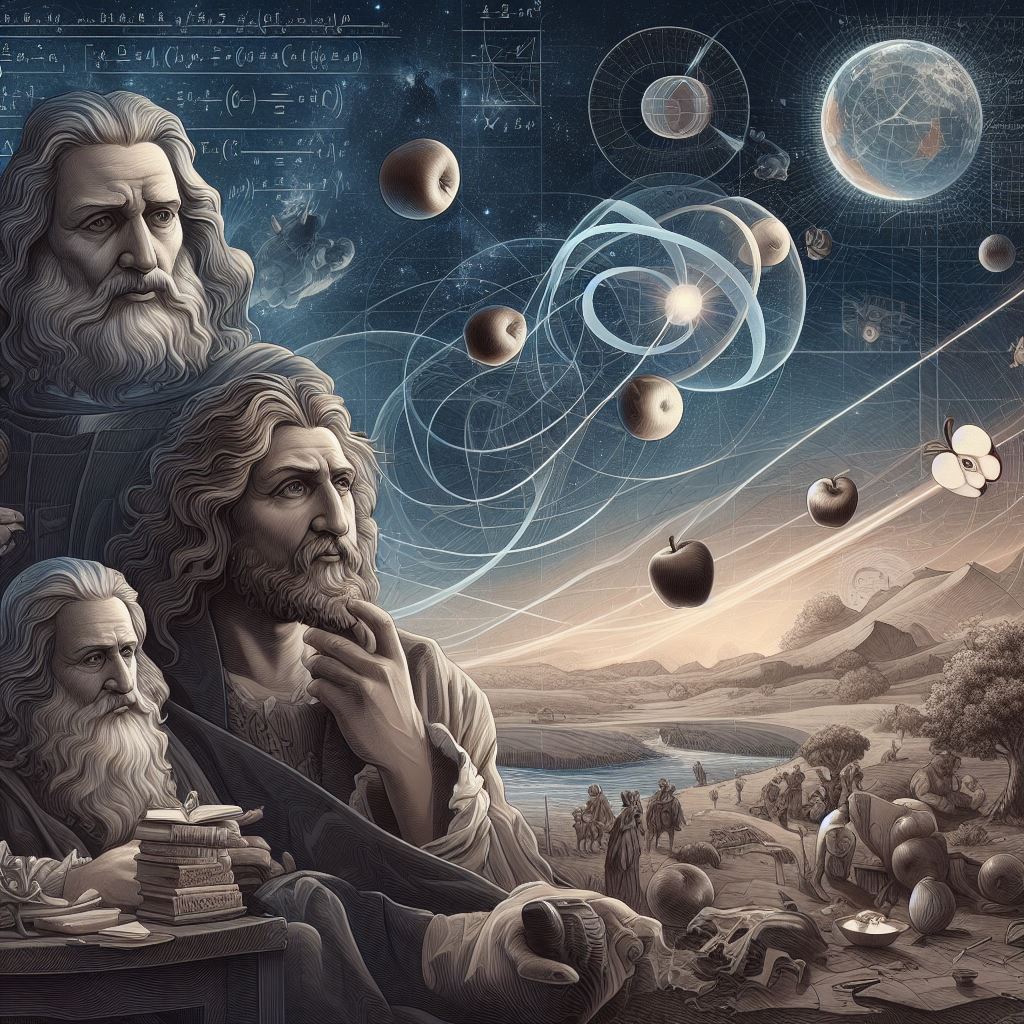
Understanding Newton's Law of Gravitation: From Basics to Application
Dive into the groundbreaking world of Newton's gravitational theory, exploring its historical context, mathematical formulation, and its significance in our daily lives.
1. Introduction to Gravity and its Universal Significance
Gravity, often perceived as the simple force that keeps our feet on the ground, is a fundamental force that governs the very fabric of our universe. It shapes galaxies, dictates the orbit of planets, and even influences time itself under certain conditions. This article aims to provide an in-depth understanding of Newton's conceptualization of this universal force.
2. Historical Context of Newton's Discovery
-
Early Philosophies and Theories
- Prior to Newton, many civilizations had rudimentary understanding of attraction and weight. Ancient Greeks, for example, believed objects fell to the ground due to their nature.
- Galileo's observations about falling objects laid some groundwork for the laws of motion.
-
Newton's Eureka Moment
- Legend has it that an apple falling from a tree sparked Newton's curiosity about the forces at play. This story, often cited, is symbolic of the dawn of a new era in physics.
"If I have seen further it is by standing on the shoulders of Giants." - Isaac Newton
3. Mathematical Formulation of Newton's Gravitational Law
Newton's Law of Gravitation states that every point mass in the universe attracts every other point mass with a force that is directly proportional to the product of their masses and inversely proportional to the square of the distance between them.
- The Formula:
G×m1×m2â/r2
Where:
- F is the gravitational force between two
- G is the gravitational constant.
- Till and m2 are the two masses.
- r is the distance between the centers of the two masses.
Significance of the Gravitational Constant (G):
-
- The gravitational constant is a key factor in the law. It's the scaling factor that describes the strength of the gravitational force in the universal context. Current measurements place its value at approximately 6.674×10−11 Nm2/kg2.
4. Limitations and Strengths of Newton's Law
-
Strengths:
- It provides accurate predictions for most physical scenarios on Earth and our solar system.
- It's foundational for many branches of physics and engineering, from building bridges to launching rockets.
-
Limitations:
- It doesn't account for the effects of relativity at very high speeds or in high gravitational fields.
- It cannot be reconciled with quantum mechanics, the physics of the very small.
5. Newtonian vs. Einsteinian Gravitation
-
Newton's View: Gravitation is a force between masses.
-
Einstein's Perspective: Gravitational effects are due to the curvature of spacetime caused by mass and energy. This is detailed in his theory of General Relativity.
-
Case Study: The bending of light around a massive object (like the sun) is more pronounced in General Relativity than in Newtonian predictions. This phenomenon, known as gravitational lensing, was one of the first real tests of Einstein's theory.
6. Practical Applications of Newton's Law of Gravitation
- Space Exploration: Newton's laws guide the trajectories of rockets and space probes.
- Architecture: Buildings and bridges take into account gravitational forces to ensure stability.
- GPS Systems: While they incorporate relativistic corrections, the foundation is rooted in Newtonian physics.
7. Fundamental Concepts
- Gravitational Force: The pull that two bodies exert on each other due to their mass.
- Mass: A measure of the amount of matter in an object, it's a primary factor determining the gravitational pull between objects.
- Distance: In the context of gravitation, it's typically the separation between the centers of two masses.
8. Conclusion and the Way Forward
As we continue our journey into the depths of the universe, understanding the nuances of gravitation becomes even more crucial. From the early musings of ancient civilizations to the precise calculations of today's scientists, the quest for understanding gravity has been a relentless pursuit of knowledge.
While Newton laid the foundational stone, scientists like Einstein took it further. And as we stand on the brink of new discoveries, with mysteries like dark matter and dark energy yet to be unraveled, one thing remains certain: our quest to understand the universe and our place in it is far from over.
References:
- "Philosophiæ Naturalis Principia Mathematica" by Isaac Newton
- "Gravity: An Introduction to Einstein's General Relativity" by James B. Hartle
- NASA's resources on gravitation and celestial mechanics
- University physics textbooks and curriculum
- Relevant peer-reviewed articles from journals on gravitational studies.





